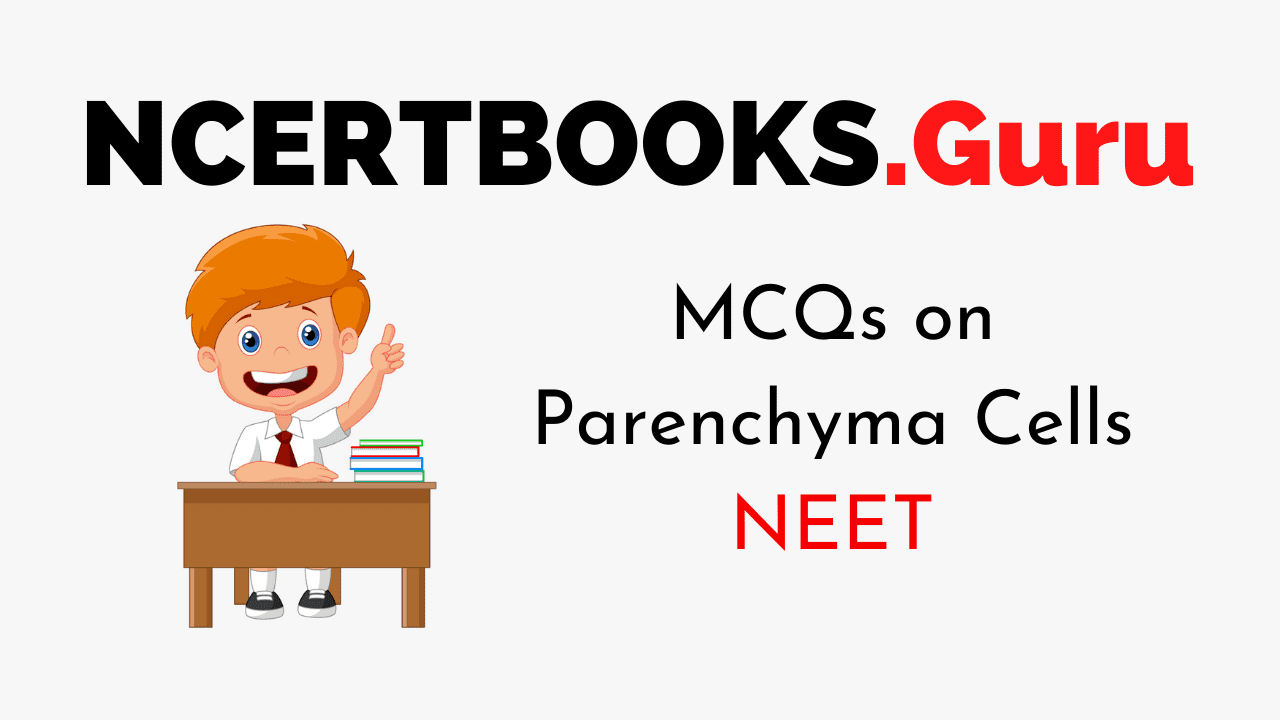NEET Biology is the scoring paper in the medical entrance examination. Here, you will discover the NEET Biology MCQ Questions for all Concepts as per the latest syllabus. Practice more on a regular basis with these NEET Biology objective questions on air pollution and improve your subject knowledge & problem-solving skills along with time management. NEET Biology Parenchyma Cells Multiple Choice Questions make you feel confident in answering the question in the exam & increases your scores to high.
MCQs on Parenchyma Cells
1. Mostly, the flesh of fruit is made of
(a) Collenchyma
(b) Parenchyma
(c) Meristem
(d) Schlerids
Answer
Answer: (b)
2. Prosenchyma is a type of
(a) Chlorenchyma
(b) Collenchyma
(c) Sclerenchyma
(d) Parenchyma
Answer
Answer: (d)
3. The tissue where cells are thin-walled, living, isodiametric along with intercellular spaces is
(a) Arenchyma
(b) Prosenchyma
(c) Collenchyma
(d) Parenchyma
Answer
Answer: (d)
4. The plant tissue with the following characteristics is –
– Oval/round-shaped cells
– Cells have a living protoplasm and are dense
– Cell wall is made of cellulose or hemicellulose
– Thin-walled cells
(a) Parenchyma
(b) Collenchyma
(c) Scherenchyma
(d) Epidermis
Answer
Answer: (a)
5. The main purpose that the aerenchyma serves in Parenchyma is
(a) Offers flexibility
(b) Renders Buoyancy
(c) Provides structural framework
(d) Provides mechanical support
Answer
Answer: (b)
6. Which of this is not a function that Parenchyma performs
(a) Stores nutrients and food
(b) Aids in regeneration, healing and repairs wounds
(c) Provides foundation and support
(d) None of these
Answer
Answer: (d)
7. The tissue that provides maximum mechanical strength to the plant is
(a) Xylem
(b) Phloem
(c) Parenchyma
(d) Collenchyma
Answer
Answer: (a)
8. Parenchyma cells in the spongy mesophyll exhibit large intercellular spaces promoting:
(a) To become nutrients for the future germinating embryo
(b) Greater exposure to carbon dioxide
(c) To distribute pressure evenly through the structure
(d) No specific reason
Answer
Answer: (b)
9. Vessels are found in
(a) Most of the angiosperms and few gymnosperms
(b) All angiosperms and some gymnosperms
(c) All angiosperms, all gymnosperms and some pteridophytes
(d) All pteridophytes
Answer
Answer: (a)
10. The main difference between parenchyma, collenchyma and sclerenchyma is that
(a) Parenchyma is involved in photosynthesis, secretion and storage
(b) Collenchyma is involved in support and transportation of nutrients
(c) Sclerenchyma is involved in support, protection, transportation of nutrients and water
(d) All of these
Answer
Answer: (d)
